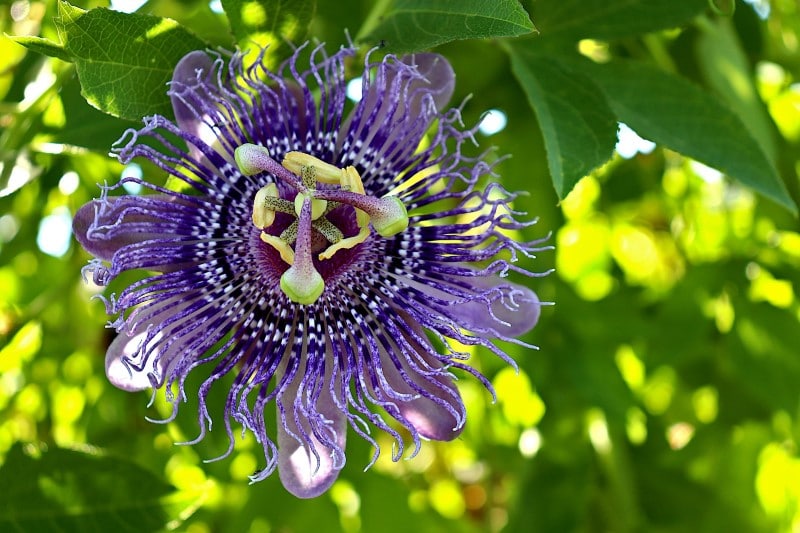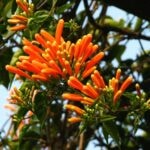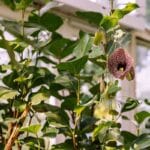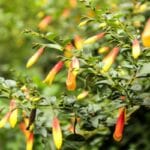Do you think plants with unique flowers deserve the spotlight? Well, maypop vines are here to steal the whole show. It has attention-grabbing flowers and fruit. If this is the type of passion flower you would like to be the latest addition to your garden, read on to know more.
Botanical Information
The maypop vine is also known as the purple passion vine, apricot vine, and purple passionflower. It came from the Passifloraceae family or the passionflower family. Also, it has the scientific name Passiflora incarnata. Its genus, Passiflora, is a combination of Latin words passio and flos. The former means passion, while the latter refers to a flower.
Spatial Distribution
These passion flowers originated from the Central and Eastern parts of the United States. It is where the Native Americans use the plant for its medicinal values. The roots were used to treat inflammation and cuts, while other parts of the plant were used for tea.
The maypop vine is then introduced to areas in USDA zones 5 through 10. Knowing the places of origin for the maypop vine will help one understand the growth habits and environmental requirements.
Growth Habits
The purple passion flower vine is a perennial deciduous climber that extends for 6 to 8 feet in height and 3 to 6 feet in width. The vine can reach as high as it can with the help of its tendrils. Its tendrils serve as an extra anchorage. In warm winter climates, it becomes woody, but in cold winter climates, it rots to the ground.
Although, these measurements will vary depending on the supporting structures present for the vine to cling. This tendril climbing vine can spread aggressively and cover a large area with root suckers or axillary tendrils in a short amount of time. This characteristic is why enough space and sturdy support is crucial.
Leaves
The leaves of the maypop vine are trilobed with a dark green upper surface and a grayish underside. Also, the leaf margins are toothed. Its leaves are alternately attached to the grainy green stem.
Flowers
As the main attraction, the maypop flowers have a unique appearance with 7 to 20 petals and showy sepals. The size of the flower ranges from 1 to 3 inches in diameter. It also has a variety of colors, from white, blue, lavender, and pink.
In addition, it has a central crown of pinkish purple filaments sprouting from the middle. The maypop flowers bloom and exude a scent during spring and summer. They also put on a show longer than common flowering vines. Moreover, the flowers are edible.
Fruit and Seeds
After flowering, the maypop produces edible berries in the early fall and summer. It is juicy, leathery, and round, which matures to a yellow tint from green or orange. Inside it are brown seeds. The maypop vine got its name from the fruits as it creates a popping sound when squished.

Grow and Care Tips
Now that you know what the plant looks like, it is time to know how to keep it beautiful throughout. Here are the basic requirements for the vine’s growth.
Sun Requirement
The optimal amount of sun for the maypop vine to grow is more than 6 hours of direct sunlight or full sun. In doing so, the plant will have the needed light to develop its colors and produce sturdy plant parts. Although, it may be planted under partial shade. Having a 2-6 hour direct sunlight exposure will be the bare minimum for the plant to grow.
Water Requirement
Average amounts of water should be supplied for the plant. This may be done by watering every other day in moderate amounts. However, the frequency of watering should be altered as the weather changes. More frequent watering is needed during the hot summer months and vice versa.
Temperature and Humidity
As a sun-loving plant, the maypop vine prefers a warm and moist environment.
Soil Requirement
This vine can thrive in clay, loam, and sandy soils. In addition, the well drained soils should also be rich in organic matter content and have good water retention. The plant prefers to grow in moist soil but also tolerates drought. Moreover, the plant is a rapid grower and needs space.
To ensure that the soil retains moisture, it is recommended to cover the soil with loose mulch. This will also help to suppress weed growth and protect the roots from extreme temperatures.
Fertilizer Requirement
Fertilizer application is not a must as long as the soil has enough organic matter. The normal annual or biannual application of complete fertilizer is enough.
However, remember to apply the fertilizer during the growing season. This schedule should be followed because there is a high chance of the plant producing more dark green leaves than flowers when fed during the flowering season.
If the goal is to have better blooms, feed the plant with phosphorus-rich fertilizers. Also, remember to follow the recommended rate for the product indicated on the label.
Maintenance Activities
Pruning the maypop should be done regularly. Having a scheduled pruning will help the plant grow more vigorously and produce even more beautiful flowers.
This is because, in pruning, the dead and damaged plant parts are removed. This helps the plant reallocate the nutrients and food to other parts and develop new ones too.
Since pruning also helps the plant become lighter, the supporting structure will have fewer problems. However, when the plant becomes too heavy it causes the trellis or stake to break. This might lead to accidents. To avoid these, remember to provide sturdy stakes, trellises, or any supporting structures.
Propagation
The passionflower may be reproduced by sowing seeds or cuttings. In using seeds, the best time to harvest the seeds is when they are brown and mature.
Then, run through water and clean the seeds. Remove the slimy and sticky substance, then air dry. It may be sown directly or stored in an air-tight jar in a refrigerator. Commonly, there is a low germination rate for direct sowing seeds. This is why cuttings are preferred.
At the start of the season, collect cuttings that are 6 to 8 inches long. Then, plant it in well-drained and moist soil. After the cuttings have developed a root system, transplanting may be done.
Uses
Human Uses
The edible maypop fruits are used in culinary creations and can be eaten fresh. In addition to their culinary uses, maypop fruits have traditional medicinal applications for anxiety and insomnia.
Horticultural Uses
Grown for ornamental purposes, Passiflora incarnata’s intricate flowers and vine-like growth make it a popular choice in gardens and landscapes.
Wildlife Uses
The plant attracts pollinators, including bees, butterflies, and hummingbirds, contributing to biodiversity in natural ecosystems. Moreover, several butterfly species, including the Gulf Fritillary, Variegated Fritillary, and Zebra Longwing butterflies, all use these Passiflora types as a larval host plant.
Potential Harm
This beautiful vine is not an invasive plant but is a fire hazard. According to studies, the maypop vine is highly flammable. It is suggested to be placed away from areas of cooking and other possible fire exposure.
FAQs
Can I grow passion flower indoors?
Yes, you can grow passion flower indoors if you provide it with adequate sunlight, well-draining soil, and proper support for climbing.
Why is my passion flower dying?
Several factors could cause a passion flower to decline, including overwatering, insufficient sunlight, nutrient deficiencies, or pests/diseases. Check its environmental conditions and care routine to identify the issue.
Can passion flower grow in pots?
Yes, passion flowers can thrive in pots as long as the pot is large enough to accommodate its roots, has good drainage, and is filled with quality potting soil.
Can I grow passion flower from a cutting?
Yes, passion flowers are generally easy to propagate from cuttings. Take a cutting from a healthy stem, remove the lower leaves, dip the cut end in rooting hormone, and plant it in a well-draining soil mix.
Will passion flower root in water?
Yes, passion flower cuttings can root in water, although rooting them directly in soil often yields quicker results. If using water, change it regularly to prevent rot and ensure the cutting receives sufficient oxygen.
For more vines to grow, see our vine list.
*image by [email protected]/depositphotos







